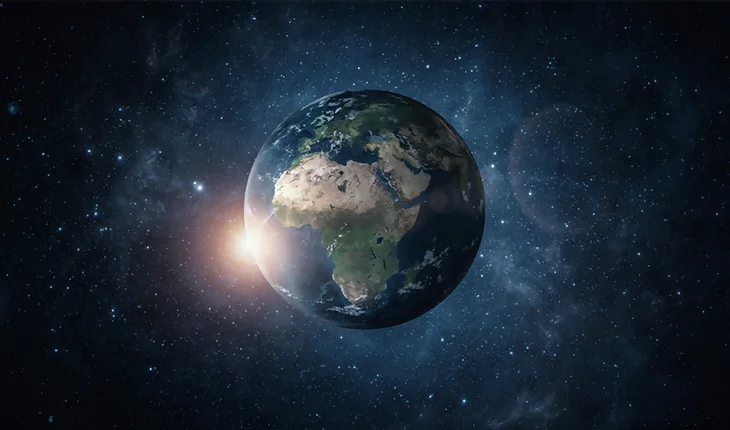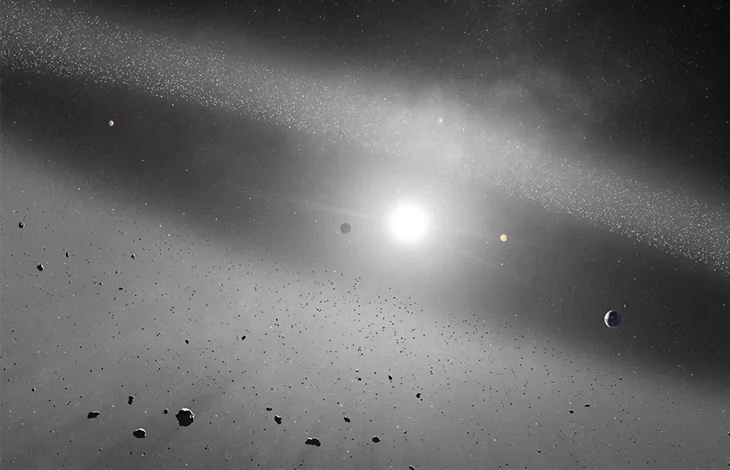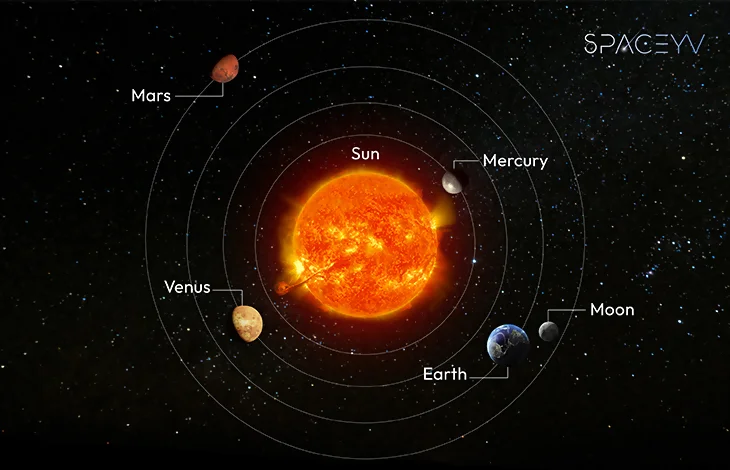In our solar system, rocky planets orbit near the Sun. These are called terrestrial planets. Mercury, Venus, Earth, and Mars are the main ones. But which one is the biggest? Let’s explore space together and determine which planet takes the crown for size among these inner planets. Join us on a journey through space as we uncover the mysteries of planetary size and reveal the largest one.
Earth is the biggest rocky planet in our solar system. It measures about 12,742 kilometers across, more than Mercury, Venus, and Mars. Earth’s big size means it has many different landscapes, huge oceans, and many different kinds of plants and animals, making it a very special place among the other planets around us.
Terrestrial planets Definition & facts about the inner planets and beyond
Terrestrial planets are like Earth; they’re made of rock or metal and have a solid surface. They also have a dense, heavy-metal core, few moons, and exciting features like valleys, volcanoes, and craters.
In our solar system, we have four rocky planets closest to the Sun and four terrestrial planets: Mercury, Venus, Earth, and Mars. When the solar system was taking shape, there were likely more little rocky planets, but they either joined together or were destroyed.
Defining what a “planet” is can be tricky, according to the International Astronomical Union (IAU). They say a planet must orbit the Sun, be primarily round, and clear its orbit of debris. Some scientists disagree, especially about the clearing part. They argue that it takes a lot of work to measure how much clearing a planet does. For example, Pluto, now considered a dwarf planet, might clear less space than Earth, but some people still call it a planet. This debate also involves other dwarf planets scattered throughout our solar system.

Earth
Earth stands out among the four rocky planets as the largest and the only one with lots of liquid water. Water is vital for life, from deep oceans to towering mountains, and our planet is teeming with it. Like the other rocky planets, Earth has a solid surface with mountains and canyons and a deep, heavy-metal core.
Earth’s atmosphere holds water vapor, which helps keep temperatures stable throughout the day. Different parts of the planet experience regular seasons: areas near the equator stay warm, while those closer to the poles get cooler and icy during winter. Sadly, Earth’s climate is warming up because of human-made greenhouse gases, which trap heat and cause climate change.
Earth also has a magnetic field, and its northern magnetic pole moves several miles each year. Some scientists think this could be a sign that Earth’s magnetic poles might flip soon. The last time this happened was 780,000 years ago.
Our planet has one big moon that astronauts visited in the 1960s and 1970s. It’s an exciting place with diverse landscapes and a vibrant ecosystem that supports life in many forms.
Mercury
Mercury is the most minor rocky planet in our solar system, only about a third the size of Earth. It doesn’t have much atmosphere, so its temperatures swing between hot and freezing cold. Mercury is very dense, mostly made of iron and nickel, with a solid iron core. Its magnetic field is much weaker than Earth’s and has no moons.
Mercury’s surface is full of deep craters, and a thin layer of tiny particles covers it. In 2012, scientists found signs of organics, which are the building blocks of life, as well as water ice in shaded craters. But because Mercury has such a thin atmosphere and is so close to the Sun, life as we know it is impossible to exist there.
Mars
Mars boasts the most prominent mountain in our solar system, reaching 78,000 feet (almost 24 km) tall. Most of Mars’s surface is ancient and covered in craters, but there are newer areas too. On the Martian poles, there are icy caps that get smaller in the spring and summer. Mars is lighter than Earth and has a weaker magnetic field, which suggests it has a solid core instead of a liquid one.
Venus
Venus, about the same size as Earth, has a super thick and poisonous atmosphere mainly made of carbon monoxide. This dense atmosphere holds heat, making Venus the hottest planet in our solar system.
Venus doesn’t have any moons. The planet’s surface is dotted with volcanoes and deep canyons. The largest canyon on Venus stretches a whopping 4,000 miles (around 6,500 kilometers) across its surface. Some of the volcanoes on Venus might still be active. Very few spacecraft have been able to explore Venus because its atmosphere is so thick and hard to get through. Even large meteors struggle to make craters on Venus because of its challenging atmosphere. Sadly, Venus isn’t a welcoming place for life as we know it.

Non-terrestrial planets
Some planets in our solar system are not like Earth. Jupiter, Saturn, Uranus, and Neptune are giant planets made mostly of gas. They’re called gas giants or Jovian planets. Scientists aren’t sure what makes a planet rocky or terrestrial. Some giant planets, like super-Earths, might have surfaces covered in liquid. Compared to terrestrial planets like Earth, gas giants are much larger and have thick atmospheres filled with hydrogen and helium gases. On Jupiter and Saturn, most of the planet is made of hydrogen and helium, while on Uranus and Neptune, they mostly form the outer layers. These gas giants aren’t suitable for life as we know it. However, they have moons with icy surfaces that might have oceans underneath, which could support life.
Source:
Related Contents:
Largest and Smallest Planets in the universe
How Close is Mars To The Earth



